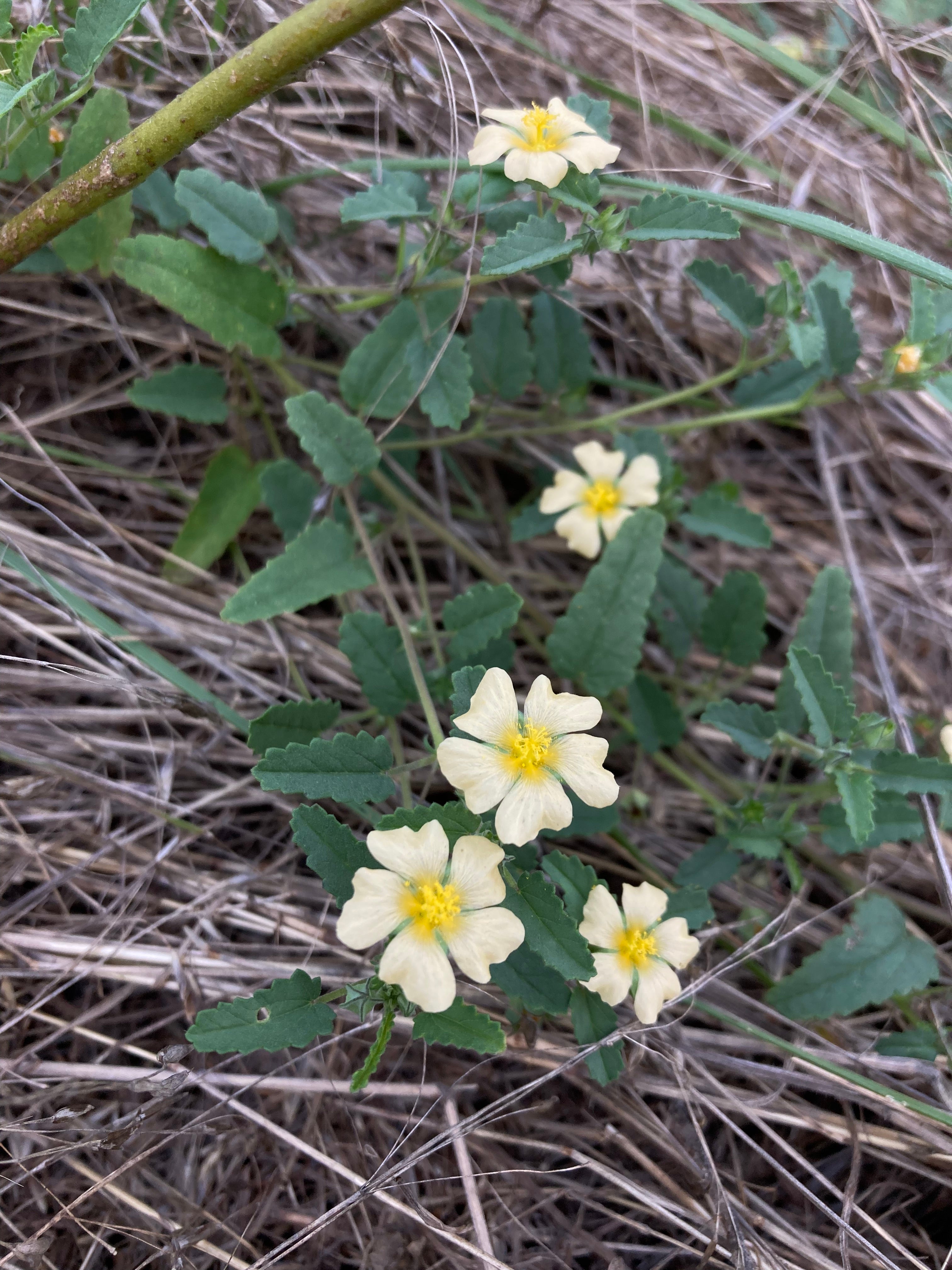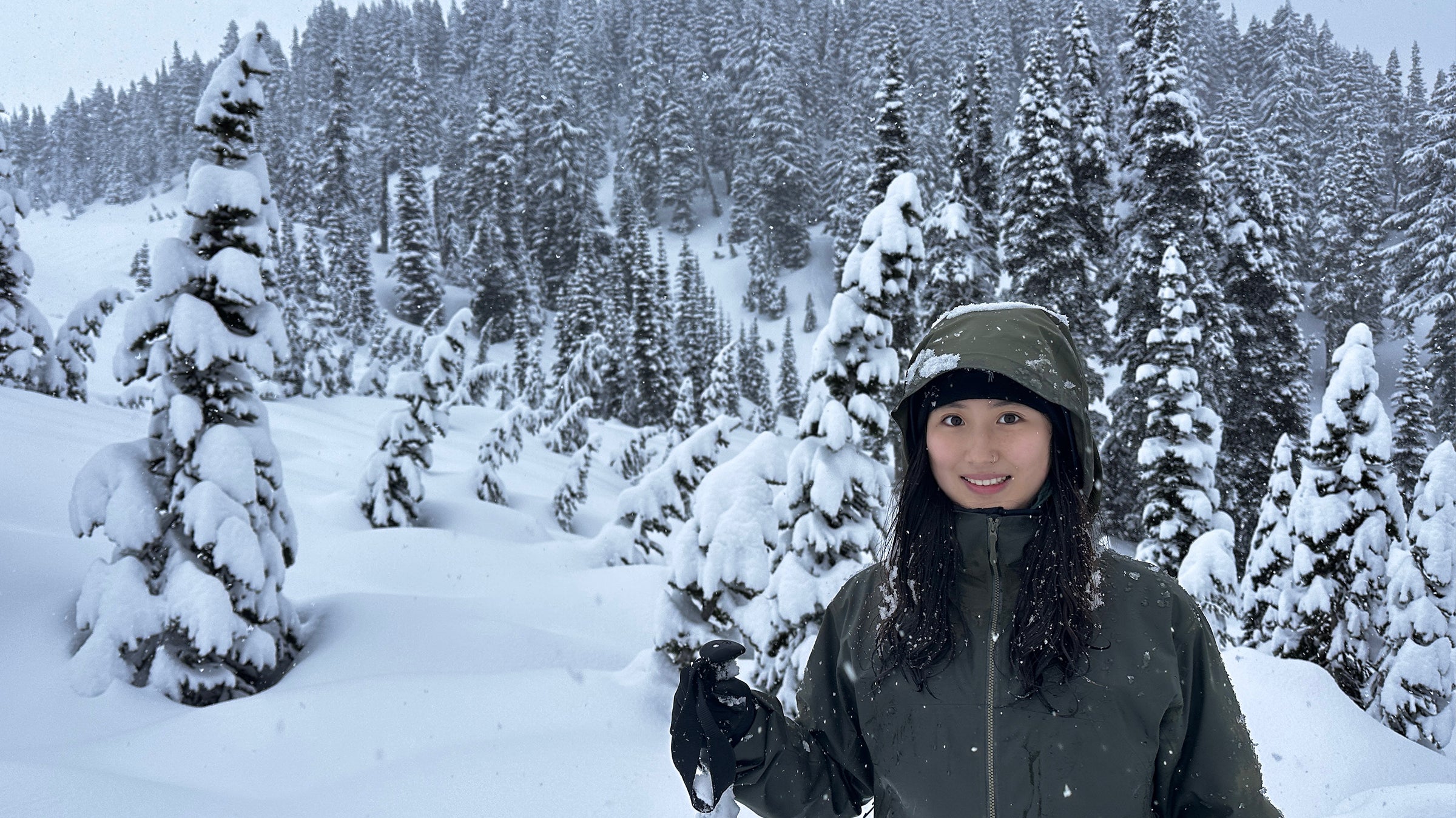
Keri at the Smithsonian Tropical Research Institute.
Tell us where you came from before UT, and what you studied then?
I am an international graduate student from Scotland. My undergraduate studies were completed at the University of Stirling, which is where I got my first taste of scientific research. My undergraduate thesis explored the impact of an invasive species, Rhododendron ponticum, on native tree seedling recruitment. From there, I spent time as in Intern at 2 different research institutes: the German Centre for Integrative Biodiversity Research and the Smithsonian Tropical Research Institute in Panama, where I worked on different quantitative and fieldwork-based projects. Together, these experiences shaped my professional development and inspired me to apply for the PhD Program at UT Austin.
What got you interested in studying global change factors on plant-fungal interactions and defenses?
It was while working at the Smithsonian Tropical Research Institute that I first heard about the importance of plant-associated fungi for plant survival and productivity. I was immediately fascinated. These fungi represent an invisible and highly unexplored ecosystem within a single leaf. It is amazing.
As I began to develop my own ideas and research questions, my curiosity about the true importance and function of these fungi only grew. I read studies about how plant-associated fungi can help plants to fend off diseases and herbivores, studies showing that these fungi are able to increase plant water uptake in extreme drought, and studies which have shown that these fungi can increase plant stress tolerance, including to heat and to salinity. The more I read, the more important these plant-associated fungi seemed. And yet, there seemed to be very few studies which documented how different environmental conditions seemed to affect these fungi.
In present times, it’s hard to ignore the impacts of global climate change, and this is a primary motivator for my research. We humans are already facing the challenges of climate change, as are natural communities. And these challenges are only going to become more noticeable and difficult as climate change continues to take effect. So the study of how these important plant-associated fungi are going to be impacted by global change has never been more important.

These plastic panels are part of a rainfall exclusion shelter to help us study the impact of drought on the plants and their associated fungi.
Does Texas present a unique situation, challenge or benefit for your research?
Studying plant ecology in Texas is both a challenge and a benefit for my research on global change effects! Plants which are native to central Texas are generally adapted to difficult conditions, including searingly hot temperatures and long-term drought. Yet, with global climate change, these already difficult conditions are only going to become more extreme. When plant communities become stressed due to difficult conditions, fungal symbionts become even more important in plant survival, a factor which motivated me to question how these important, yet invisible to the naked eye, organisms are themselves going to be impacted by increasing extreme climate change. It will be interesting to see how native Texan plants and their fungal symbionts, which are already adapted to difficult conditions, fare when subjected to even more extreme climate conditions.
How will being a Stengl-Wyer Fellow help advance your work?
The Stengl-Wyer Graduate Fellowship is an incredible opportunity to form connections with researchers from many different areas of study, something which I truly believe can only improve my research. The wealth of experience and research topics that are present in the program inspire me to think of new avenues of research and collaborations that I would not have the opportunity to interact with if it were not for the Fellowship. The program brings together an incredible array of research areas and backgrounds, generating endless opportunities for both personal and professional development, and I am grateful to be a part of it.
The Stengl-Wyer Fellowship is also an incredible financial help for my PhD, since graduate students are able to receive up to $2,000 in research funding for their proposed projects. The Fellowship allows me to spend an entire year 100% dedicated to my research. Such opportunities are highly coveted and relatively rare for graduate students who generally spend 50% of their time teaching. The extra time that I have while being a Stengl-Wyer Fellow is a huge help in the progression of my research and the overall advancement towards the completion of my PhD.
How does the Lady Bird Johnson Wildflower Center support your research?
Working out at the Lady Bird Johnson Wildflower Center is a real treat. Not only am I lucky enough to work in a beautiful setting with an ethos and I totally support, I also have the wonderful opportunity to work alongside a hugely diverse community of people who are all passionate about plants! The Center has wonderful resources, including well documented flora and fauna, an herbarium, a seed collection, and a huge team of Science and Conservation staff. I am lucky to have access to these resources.
Out at the field site, I have lost count of the number of interns, volunteers, technicians, and staff from the Wildflower Center who have contributed to the overall set up and maintenance. It is truly amazing to be a part of such a big team. The site is huge, we have 84 plots which receive 14 different treatments between them.
I was also fortunate to be supported for a summer of research by the Wildflower Center Graduate Research Fellowship, which allowed me to dedicate my time to the collection and processing of my samples. This was invaluable, since it allowed me to focus 100% on sample collection and resulted in me being able to collect more samples than I could have imagined, increasing the strength of my overall study.
Where do you see your research agenda heading after UT?
I am passionate about the study of global change on plant communities and their associated symbiotic fungi. In this world, where conditions are constantly changing and plants are continuously required to withstand more extreme conditions, the study of how future plant communities may look will only become more important. My work has applications for conservation, for the management of natural landscapes, for food security, and for so much more. I can easily see how this work could be used to study communities and inform decisions across this broad suite of disciplines, and that excites me a lot! I am looking forward to exploring future opportunities and to seeing where my path takes me. And, while I am unsure exactly where my path will lead me, I know that I will continue to pursue this research area, because I truly believe that we need to be studying this important interaction between plant communities- fungal symbionts- and global climate change.




